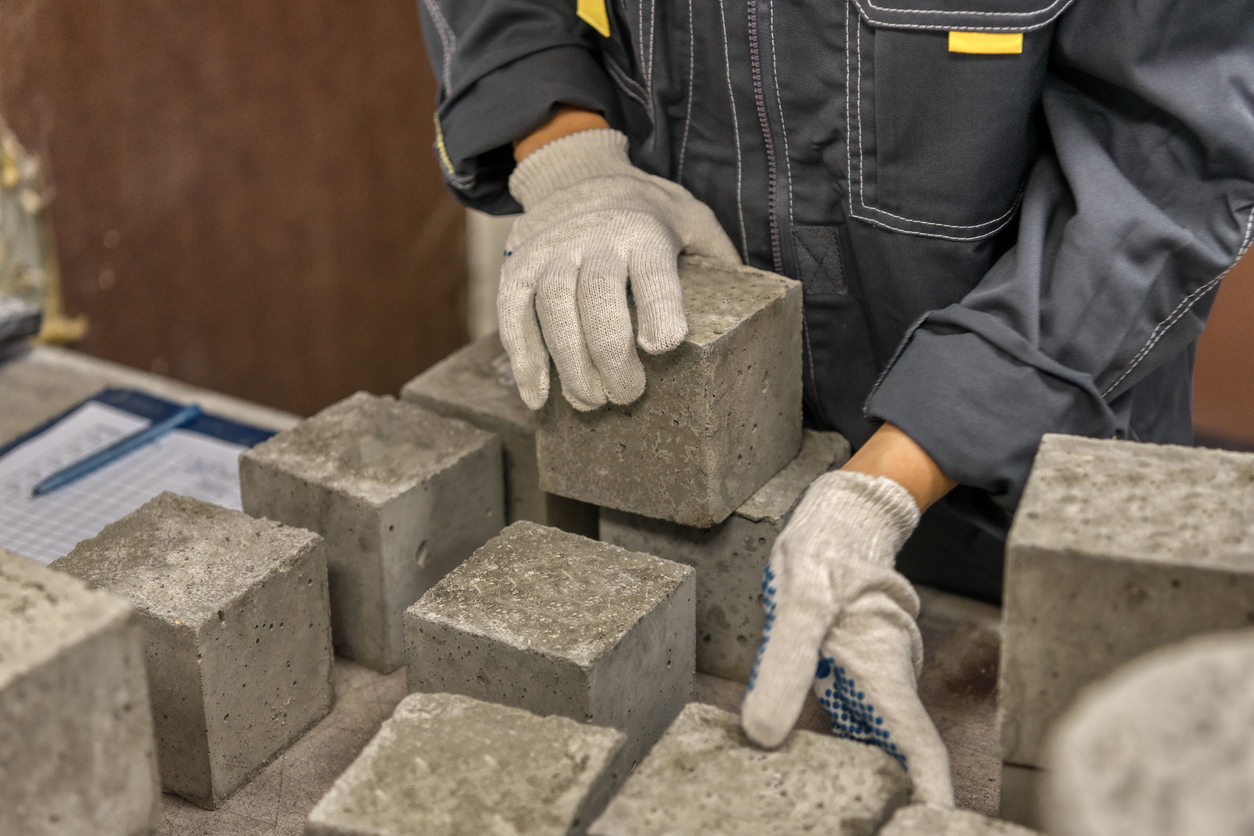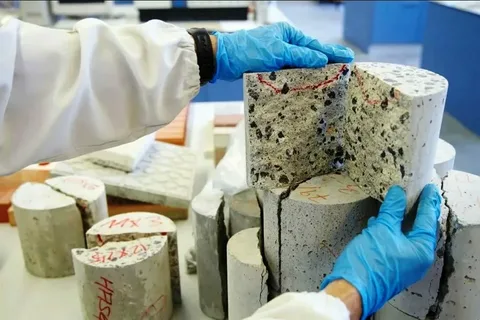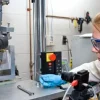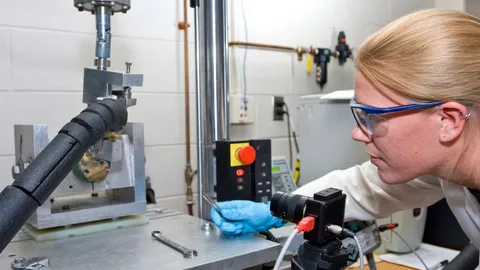In the intricate world of construction materials testing, concrete laboratories stand as critical quality assurance gatekeepers. These specialized facilities, often overlooked in discussions of construction innovation, represent the scientific backbone that ensures our buildings, bridges, and infrastructure meet rigorous safety standards. The daily operations within these labs involve complex testing protocols, meticulous documentation, and analytical precision that directly impact construction timelines and structural integrity.
Laboratory efficiency in concrete testing isn’t merely about speed—it’s about maintaining accuracy while optimizing resources. As construction demands intensify globally, testing labs face mounting pressure to deliver reliable results faster without compromising quality. This delicate balance requires thoughtful workflow redesign, technological integration, and procedural refinement that honors both scientific principles and practical constraints.
Digital Transformation Through Integrated Management Systems
The concrete testing landscape has historically relied on paper-based documentation, manual calculations, and disconnected information systems. Today’s leading laboratories are embracing comprehensive Laboratory Information Management Systems (LIMS) tailored specifically for construction materials testing. These platforms create digital ecosystems where test results, equipment calibration records, and quality control documentation coexist seamlessly.
Beyond basic data management, these systems enable real-time analytics that transform raw test results into actionable insights. When sample data from compression testing machines flows automatically into centralized databases, technicians can instantly generate statistical analyses that reveal batch consistency patterns. This immediate feedback loop allows for rapid quality adjustments at production facilities before problematic concrete reaches construction sites.
Perhaps most valuable is the ability to establish automated quality control flags within these systems. By setting threshold parameters for test results, laboratories can implement immediate notification protocols when values approach specification limits. This proactive approach replaces the reactive troubleshooting that often leads to costly construction delays and material rejection.
Precision Equipment Calibration and the Slump Cone Revolution
Equipment reliability forms the foundation of testing accuracy. The calibration processes for devices ranging from compression testing machines to slump cones represent critical workflow components that demand systematic attention. Modern laboratories are reconceptualizing calibration protocols through reliability-centered maintenance approaches that predict optimal calibration intervals based on usage patterns rather than arbitrary calendar schedules.
The humble slump cone, a seemingly simple device used to measure concrete consistency, exemplifies how even basic testing equipment deserves sophisticated calibration attention. The dimensional precision of these conical molds directly influences slump measurement accuracy measurements that inform crucial workability decisions at construction sites. Forward-thinking laboratories implement digital dimensional verification systems for slump cones that detect subtle deformations that might otherwise go unnoticed in visual inspections.
Calibration documentation itself has evolved from static records to dynamic profiles that track equipment performance over time. By analyzing calibration drift patterns across equipment inventories, laboratory managers can identify environmental factors or usage behaviors that accelerate measurement degradation. This intelligence allows for targeted interventions that extend equipment life while maintaining measurement integrity.
Sample Management Workflow Optimization
The journey of concrete samples through testing laboratories follows complex pathways that present numerous optimization opportunities. Traditional sample handling processes often create bottlenecks that compromise both efficiency and specimen integrity. Contemporary workflow designs incorporate lean principles that eliminate unnecessary movement while maintaining chain-of-custody documentation.
Sample identification systems have progressed from handwritten labels to barcode and RFID technologies that enable touchless tracking throughout the testing process. These automated identification methods virtually eliminate the cross-reference errors that historically plagued high-volume testing operations. When integrated with laboratory information systems, these technologies create digital breadcrumbs that document every sample interaction from field collection through final reporting.
Environmental conditioning areas where specimens cure before testing present particular workflow challenges. Innovative laboratory layouts now position these spaces centrally within the physical workflow, minimizing transport distances while maximizing environmental control precision. Temperature and humidity monitoring systems with continuous data logging ensure that curing conditions remain within specification parameters, removing a significant variable from the testing equation.

Personnel Competency Development Programs
The human element remains irreplaceable in concrete testing operations, making personnel development a critical workflow component. Traditional training approaches that focus solely on procedural compliance are giving way to comprehensive competency programs that develop conceptual understanding alongside technical skills. These programs recognize that laboratory technicians make countless judgment calls that influence test results, requiring both procedural knowledge and material science comprehension.
Cross-training initiatives that rotate technicians through multiple testing disciplines create versatile team members who can respond to shifting workload demands. This staffing flexibility allows laboratories to maintain consistent throughput despite inevitable absences or sudden testing volume fluctuations. Additionally, technicians with broader testing exposure often identify process improvement opportunities that specialists might overlook.
Proficiency testing programs that periodically evaluate technician performance against reference standards provide objective competency measurements. These assessments often reveal subtle procedural variations between technicians that introduce result variability. By identifying these variations, laboratories can refine standardized procedures that minimize technician-induced result differences while maintaining individual ownership of quality outcomes.
Quality Assurance Beyond Compliance Mentality
Effective quality assurance transcends the minimum requirements of accreditation standards. Progressive concrete testing laboratories implement quality systems that treat standards like ASTM C94 as foundational rather than aspirational. These systems incorporate preventive measures that address potential failure points before they manifest as nonconformities.
Internal audit programs have evolved from dreaded inspections to collaborative improvement opportunities. When structured as educational exercises rather than punitive evaluations, these reviews generate enthusiastic participation that uncovers process vulnerabilities early. The most effective audit programs examine not just procedural compliance but also the organizational systems that support consistent quality execution.
According to the comprehensive information available at the American Concrete Institute’s educational resources , quality assurance programs that incorporate continuous monitoring consistently outperform periodic inspection approaches in preventing testing errors. This continuous quality verification creates confidence in results that extends from laboratory managers to construction professionals who rely on testing data for critical decisions.
Technological Integration Without Disruption
The implementation of new technologies within established laboratory workflows requires delicate change management. Disruptive implementation approaches that ignore existing procedural foundations often create resistance that undermines adoption. Successful technology integration follows incremental pathways that demonstrate immediate benefits while building toward comprehensive system transformation.
Automation technologies offer particular promise for concrete testing efficiency. Robotic sample preparation systems that consistently produce specimen geometries with minimal human intervention remove significant variability from testing processes. When coupled with automated testing equipment, these systems create standardized testing flows that generate highly comparable results across multiple operators and shifts.
Data visualization tools transform complex testing information into intuitive displays that accelerate interpretation. Rather than scanning columns of numbers, technicians and engineers can instantly recognize patterns and anomalies through graphical representations. These visual analytics tools empower immediate decision-making that prevents quality issues from cascading through construction projects.
Client Communication Streamlining
The ultimate purpose of concrete testing is to provide actionable information to construction professionals. Traditional reporting methods that rely on physical document delivery or email attachments create delays between test completion and information availability. Modern communication systems integrate client portals that provide secure, immediate access to test results within minutes of verification.
These portals transform static reports into interactive data environments where clients can analyze historical trends, compare batch variations, and generate custom analyses without laboratory assistance. This self-service approach reduces routine information requests that consume laboratory resources while improving client satisfaction through immediacy.
Notification systems that alert clients to critical test results based on predetermined thresholds eliminate information delays completely. When compression test results fall below specification requirements, automatic alerts trigger immediate client communication through multiple channels, allowing for rapid construction adjustments that minimize impact.
Key Takeaways
The evolution of concrete testing laboratory workflows represents a fundamental shift from reactive quality verification to proactive quality assurance. By reimagining each workflow component through efficiency and accuracy lenses, laboratories create testing ecosystems that deliver reliable results at the pace of modern construction demands. The integration of digital systems, precision equipment management, optimized sample handling, comprehensive personnel development, elevated quality assurance, thoughtful technology adoption, and streamlined client communication collectively transform concrete testing from a potential bottleneck to a valuable project accelerator.
The future of concrete testing lies not in revolutionary changes but in the systematic refinement of established scientific principles through technological enablement. As laboratories continue this evolutionary journey, the construction industry benefits from increased confidence in material performance that ultimately translates to safer, more durable infrastructure. The concrete testing laboratory, once considered simply a regulatory requirement, now emerges as an essential partner in construction innovation and quality advancement.







